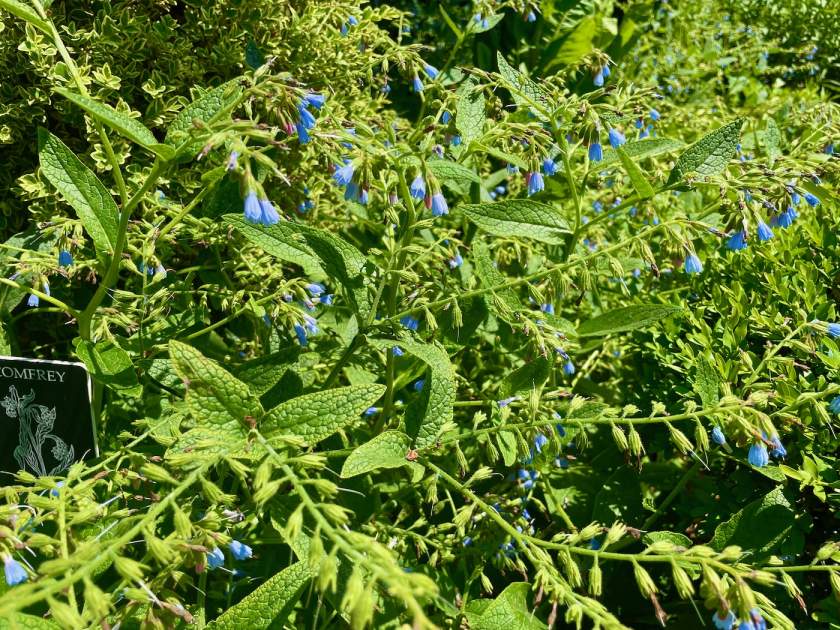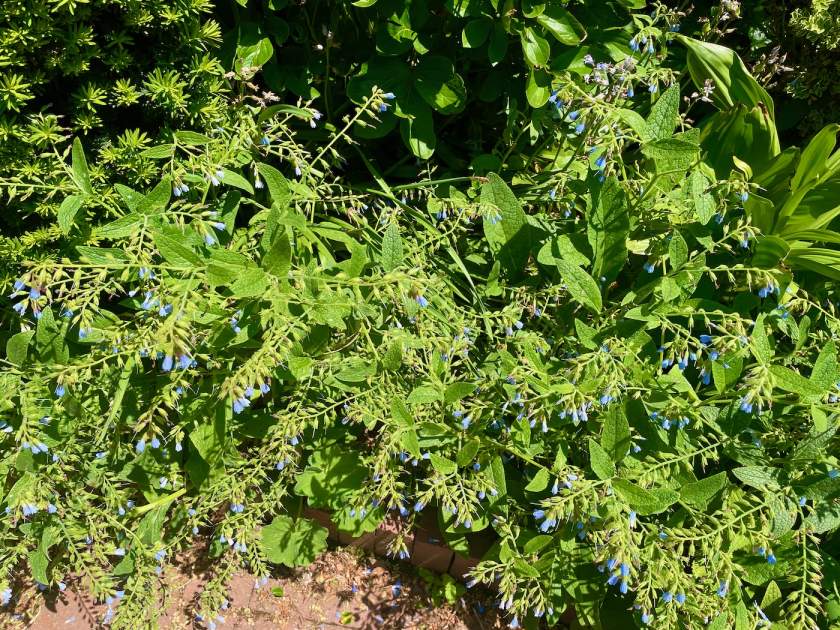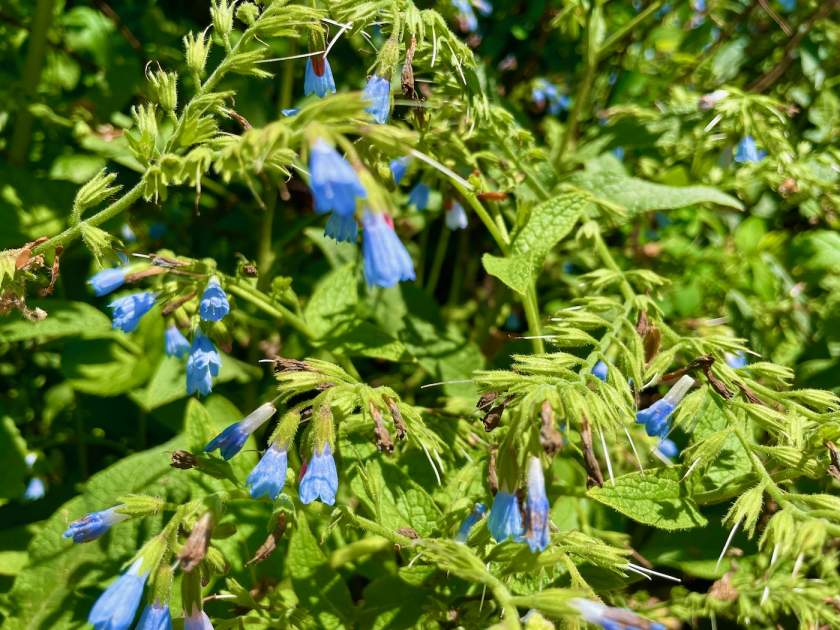Symphytum asperum: Exploring the Hardy Perennial Prickly Comfrey
Symphytum asperum, commonly known as Rough Comfrey or Persian Comfrey, is a resilient herbaceous perennial native to Europe, the Caucasus, and Iran, and it belongs to the Boraginaceae family of plants. This plant is cherished for its large, hairy leaves and clusters of small, enchanting flowers that transition from rose-pink to blue or purple. Symphytum asperum thrives in a variety of soil types and displays impressive tolerance to drought. Furthermore, it is relatively resistant to pests and diseases, making it a low-maintenance choice for gardeners.
Characteristics
Symphytum asperum is characterized by its coarse, rhizomatous growth, reaching a height of 2 to 4 feet with a similar spread. The ovate to elliptic leaves, measuring 2 to 8 inches long, feature a dark green coloration and a prickly hairy texture. In spring, the plant produces small tubular flowers in scorpioid cymes, initially opening in a charming rose-pink hue and maturing into shades of blue or purple. The flowering period spans from May to July, adding vibrant beauty to the garden.
Cultivation of Symphytum asperum:
Successful cultivation of Symphytum asperum requires attention to specific aspects of care. The following subsections provide guidelines for optimal cultivation practices:
Sunlight: Plant Rough Comfrey in a location that receives full sun to partial shade. While it can tolerate shade, partial sunlight ensures healthy growth and robust flowering.
Watering: During the first year after planting, water regularly to establish the plant. Once established, reduce watering frequency, allowing the soil to dry partially between waterings. Symphytum asperum demonstrates remarkable drought tolerance.
Soil: This hardy perennial is adaptable to a wide range of soil conditions, but it prefers well-drained soil. It can thrive in various soil types, including loam, sandy soil, and clay. Providing organic matter and improving soil drainage contribute to overall plant health.
Pest and Disease: Symphytum asperum is relatively resistant to pests and diseases. However, it may occasionally encounter issues such as aphids, slugs, and snails. Regular inspection and early treatment of any problems are recommended.
Propagation:
There are several methods for propagating Symphytum asperum:
- Seed: Sow the seeds in spring or fall. As light is crucial for germination, scatter the seeds on the soil surface and lightly tamp them down. Germination typically occurs within 2-4 weeks.
- Division: Divide the plant in spring or fall. Dig up the plant and separate it into several sections, ensuring each section has roots and leaves. Plant the divisions in their own pots or directly in the garden.
- Cuttings: Take softwood cuttings in spring or early summer. Cut a 4-6 inch section of stem from the current season’s growth, remove the lower leaves, and dip the cut end in the rooting hormone. Plant the cutting in a pot filled with moist potting mix. Place the pot in a warm, well-lit location and maintain moist but not soggy conditions. The cutting should develop roots within 4-6 weeks.
Additional Care Tips:
- Regularly inspect the plant for pests such as aphids, slugs, and snails. Take appropriate measures to control these pests to prevent damage.
- It is essential to note that Symphytum asperum can be toxic to humans and animals. Therefore, exercise caution and keep it out of reach of children and pets.
- Before planting, check with your local nursery or garden center to determine if Symphytum asperum is invasive in your area. Invasive plants can have detrimental effects on the local ecosystem and should be avoided.
With its striking foliage, captivating flowers, and adaptability, Symphytum asperum is a remarkable addition to shaded wildflower areas, naturalized spaces, and gardens seeking resilient, eye-catching perennials. By following these cultivation tips, you can cultivate and enjoy the beauty of Rough Comfrey while maintaining its health and vigor for years to come.






